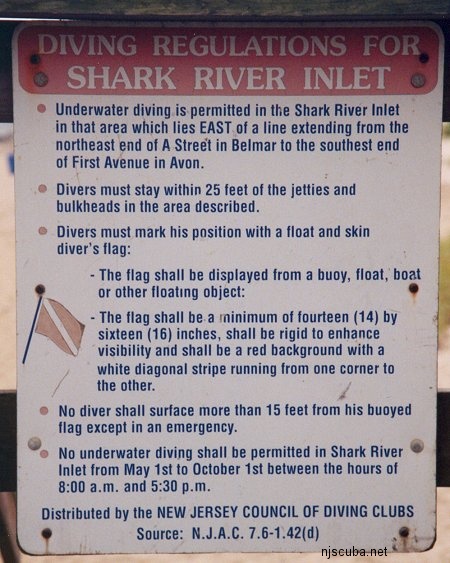Artificial Reefs Siting (1/2)
Every fisherman has his favorite fishing area and thinks that it would be the perfect spot for an artificial reef. "Why don't you build a reef here?" they ask.
Obviously, the State could never satisfy every New Jersey angler with his own pet reef. Besides that, there are many constraints that limit both the number and location of ocean reef sites. New Jersey now has a network of 15 reef sites, evenly spaced from Sandy Hook to Cape May. In its original plan, the Reef Program estimated that 14 or 15 sites would be needed to provide access to anglers and divers from every New Jersey inlet.
A permit from the U.S. Army Corps of Engineers is required for each reef site. Obtaining permits is a difficult, time-consuming, and expensive process. An Environmental Assessment must be prepared for each site. The selection of the sites is actually a process of mapping areas of the seafloor where reefs cannot be constructed due to conflicting uses of the area, such as pipelines, telephone cables, sand mining, shipping lane, and commercial trawling and dredging grounds. The Corps will not issue a reef permit for an ocean area that is currently used for other purposes.
Other constraints that reduce the ocean bottom available for reef construction include: water depth ( 50 feet of clearance over reef structures is required to allow for ship navigation, ) muddy or silty bottom, where reef structures would sink, and areas of low or high biological productivity. Reefs should not be placed in areas that have a history of low oxygen levels for this would only result in periodic kills of reef life. Highly productive areas should be avoided as well; not much would be gained by placing an artificial reef on an existing natural reef, like the Shrewsbury Rocks, or on a traditionally proven fishing ground like Barnegat Ridge.
Once the areas unsuitable for reefs are mapped, potential sites for reefs are selected within the remaining seafloor. To avoid the problem of conflicting uses, old reef sites that were originally chosen and permitted by party and charter boat associations, some as early as 1935, were permitted and re-activated by the State. Reef sites initially permitted by private groups include Sandy Hook, Sea Girt, Axel Carlson, Garden State South, Atlantic City, Ocean City, Wildwood, and Cape May. Only six previously un-permitted sites were selected by the State. Before these sites were chosen, local party and charter boat captains, including both fishermen and divers, were consulted to determine the best possible locations. Such inquiries yielded locations for the Shark River, Barnegat Light, Garden State North, Little Egg, Great Egg, and Deepwater reefs.
At this point in time, the Division does not plan to apply for any new reef sites but instead will put all of its energy into developing the 15 sites already permitted - a big enough job in itself.
This article first appeared in New Jersey Reef News - 2000 - 2003

